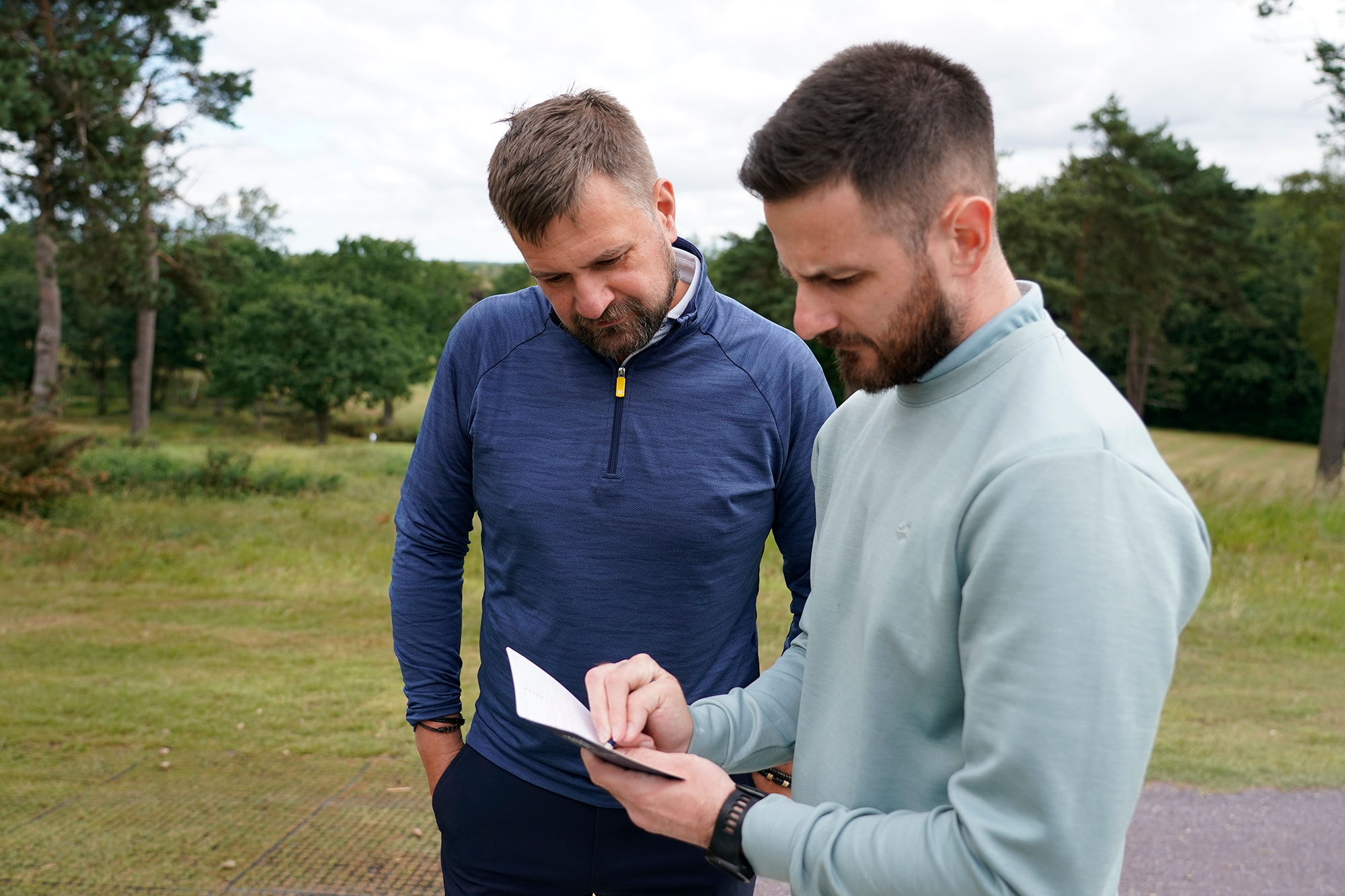You Have To Try This Pro Scorecard Trick... It Totally Transformed My Strategy On The Golf Course
I recently had a lightbulb moment after hearing a simple strategy tip from Top 50 Coach Peter Finch, which completely changed the way I think on the golf course


Peter Finch
It can be incredibly frustrating to pursue progress in golf, putting in hours and hours of work away from the course, only to see your hard work return very little in the way of scoring improvements.
After spending time tirelessly working on my fundamentals, like the perfect golf grip and the correct ball position, and working on the best golf drills - I was still going out on the course and shooting scores that were higher than I would have liked.
Then I heard a simple strategy tip from one of the most recognisable names in the golf industry - which totally transformed the way I think about a round of golf and led to a long-overdue cut to my handicap index.
In the article and video below, Golf Monthly Top 50 Coach Peter Finch explains why amateur golfers shouldn't fixate over the 'par' score for each hole on the scorecard and how making a minor adjustment to our approach can lead to positive outcomes on the course...
This Scorecard Trick Changed The Way I Think About Golf

Peter Finch is one of the most recognisable PGA professionals in the world, delivering online free lessons to golfers across the globe with a combined social following of almost one million people.
In his coaching career, Peter Finch has supported golfers of all abilities to play better golf and shoot lower scores.
If arrive on the tee box at a 450 yard hole and the scorecard says it's a par-4, that doesn't necessarily mean you have to play it as one.
Instead, you could play it like a par-5. Break it down into three good shots to find the green and two putts for a 'par', which could help you to stop forcing it and hit more green in regulation.
As I outline in the video below, my advice would be to look at the scorecard of the course you are playing before you reach the first tee box. Let's for argument sake say that you are a 15-handicapper, I would suggest marking holes 1 to 15 on the card.
Subscribe to the Golf Monthly newsletter to stay up to date with all the latest tour news, equipment news, reviews, head-to-heads and buyer’s guides from our team of experienced experts.
A post shared by Golf Monthly (@golfmonthly)
A photo posted by on
On any holes with a mark beside them, add a shot onto the par score and play the hole accordingly. All of a sudden, things become a lot easier and a lot more manageable. Rather than chasing an expected score, you give yourself a little bit of a buffer.
For example, if the card says that hole 2 is a par-3 with a stroke index of 13, play that as a par-4 and strategically plan how you are going to give yourself the best chance of achieving that score.
In fact, according to the latest Shot Scope data, golfers with a handicap of 15 or higher average a score of 5.1 or higher on par-4 holes. The same is true for par-5 holes, where that same group of golfers averages 6 or higher.

Marking your scorecard with the holes where you receive a shot on the golf course will help you to re-frame what 'par' means for you
If you get a bogey on this hole, that's fine. If you get a triple bogey on this hole, that's more of a problem.
Changing the way you think about a round of golf can help you to play much more strategically, assisting you to keep double bogeys off your scorecard by avoiding the penalty areas that destroy your scorecard.
Plotting your way around the trouble is going to be a huge benefit for most amateur golfers - especially if you want to finally break 80 or break 90 in golf.
What is the scoring average for an amateur golfer on a par-3?
Par-3 holes can be a tricky test to navigate, with very little room for error. Missing the green with your tee shot can quickly lead to big scores that damage your scorecard, but how do amateur golfers tend to fare?
According to Shot Scope data, the average scratch golfer scores 3.2 on a par-3. That number increases for a 5-handicapper (3.4), 10-handicapper (3.7) and 15-handicapper (3.9), who are often battling to avoid bogey rather than aiming for birdies.
For a high-handicap golfer, a bogey on a par-3 is a good score - according to the data.
The scoring average for a 20-handicapper is a bogey 4, and for a 25-handicapper it is 4.2, further highlighting the importance of the strategy tips Peter Finch highlighted in the article above.

Baz joined Golf Monthly in January 2024, and now leads the instruction section across all platforms - including print and digital. Working closely with Golf Monthly's Top 50 Coaches, he aims to curate and share useful tips on every aspect of the game - helping amateurs of all abilities to play better golf. Baz also contributes weekly to the features section, sharing his thoughts on the game we love and the topics that matter most. A member at Sand Moor Golf Club in Leeds, he looks forward to getting out on the course at least once a week in the pursuit of a respectable handicap.
Baz is currently playing:
Driver: Benross Delta XT
3-Wood: Benross Delta XT
Hybrid: TaylorMade Stealth 4 Hybrid
Irons: Benross Delta XT 5-PW
Wedges: TaylorMade RAC 60, Callaway Jaws MD5 54
Putter: TaylorMade Spider Tour
- Peter FinchTop 50 Coach
You must confirm your public display name before commenting
Please logout and then login again, you will then be prompted to enter your display name.